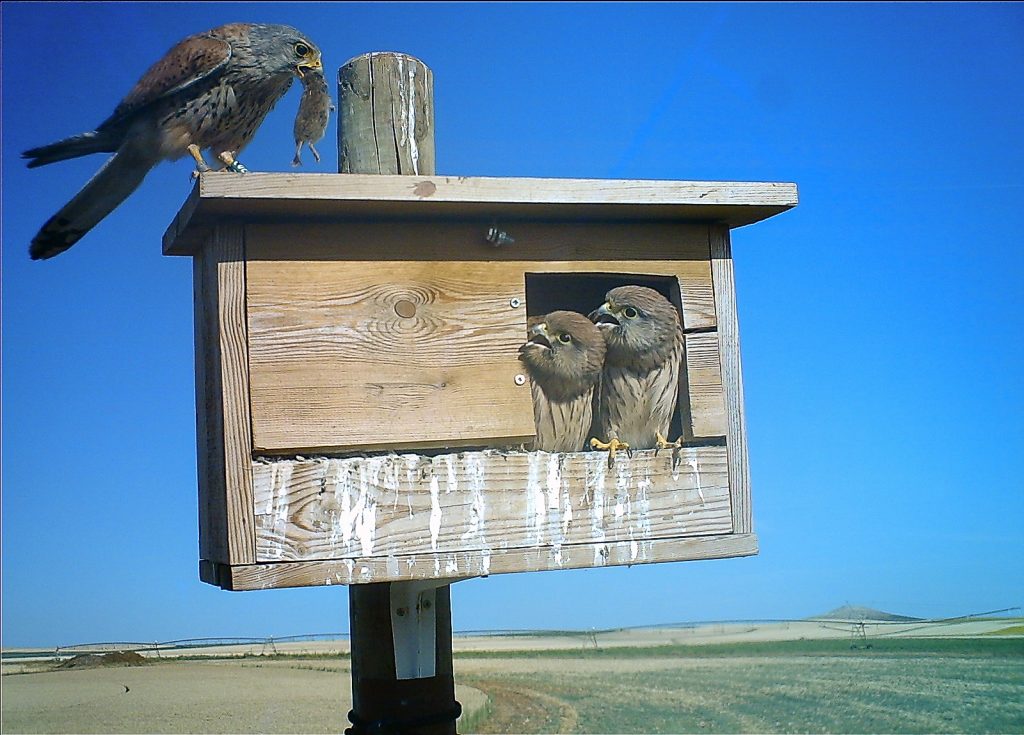TopiGEPla. BBVA Foundation. 2014-2017.
The Common vole (Microtus arvalis) is a small rodent with sudden cyclical population explosions that damage crops and have financial and health consequences in large areas of Europe. This project aims to develop biological control techniques aimed at limiting common vole plagues in agricultural landscapes. These techniques are proposed as an alternative to conventional methods, based on chemical rodenticides and vegetation burning along road verges and fences, which causes considerable harm to the agricultural ecosystem.
 The specific objectives of the project are:
The specific objectives of the project are:
- Scientific monitoring of common vole demographics, ecology and dispersal at various spatial scales, as well as the validity of combining nest boxes for birds of prey and good agricultural practices as an integrated ecological control system for this species.
- To assess a possible phenotype selection process in captures by the two predatory bird species that occupy the nest boxes in the established experimental areas, with a particular focus on the potential influence of biological control on spreading disease.
- Establish an experimental breeding core of weasels (a specialist small rodent predator) and develop census and study methods for the species for an experimental assessment of this predator’s effect on weasel demographics in southern European agroecosystems.
- Analyse the role of linear environments, particularly road ditches, in this species’ demographics.
- Assess the use of intra-specific chemical signals in common voles held in captivity with a view to defining a framework for their subsequent application as a biological control method in wild populations of the species.

